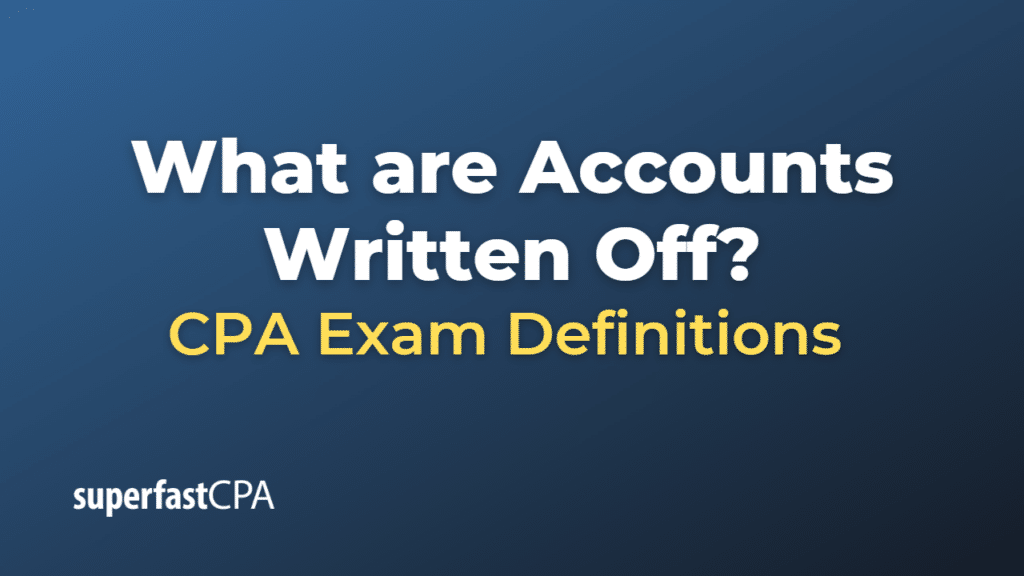Accounts Written Off
Accounts written off, also known as bad debts or uncollectible accounts, refer to receivables that a company is unable to collect from its customers. This situation typically arises when a customer is unable or unwilling to pay the outstanding amount owed to the company, often due to financial difficulties, bankruptcy, disputes, or fraud. When a company determines that it is unlikely to collect the outstanding debt, it may decide to write off the account as a bad debt.
Writing off an account means removing it from the company’s accounts receivable and recognizing the uncollectible amount as an expense in the income statement. This process reduces the company’s accounts receivable balance and affects its net income.
The process of writing off accounts often involves the following steps:
- Establishing an allowance for doubtful accounts: Companies usually create an allowance for doubtful accounts, which is a contra-asset account that estimates the amount of accounts receivable that are expected to become uncollectible. This allowance is based on historical data, industry trends, or specific customer situations.
- Identifying uncollectible accounts: The company periodically reviews its accounts receivable and identifies the accounts that are unlikely to be collected.
- Writing off the account: Once an account is identified as uncollectible, the company writes it off by debiting the allowance for doubtful accounts and crediting the accounts receivable for the specific customer.
- Reporting bad debt expense: The company records the bad debt expense in the income statement, which reflects the cost of extending credit to customers who do not pay their debts.
It’s important to note that writing off an account doesn’t necessarily mean that the company stops pursuing the outstanding debt. The company may still take legal action, use collection agencies, or sell the written-off accounts to debt buyers to recover some or all of the outstanding amount.
Example of Accounts Written Off
Let’s consider a fictional company called “GadgetStore” that sells electronic gadgets on credit. During the year, GadgetStore identified that it’s unlikely to collect $10,000 in outstanding accounts receivable from certain customers. Here’s how the company would write off these accounts:
- GadgetStore had previously established an allowance for doubtful accounts based on its historical data and industry trends. At the beginning of the year, the allowance for doubtful accounts had a balance of $15,000.
- After reviewing its accounts receivable, GadgetStore identified that $10,000 of outstanding receivables were unlikely to be collected. These accounts were deemed uncollectible due to various reasons, such as customer bankruptcies, financial difficulties, or disputes.
- GadgetStore writes off the uncollectible accounts by debiting the allowance for doubtful accounts and crediting the accounts receivable for the specific customers. The journal entry would be:Allowance for Doubtful Accounts (Debit) – $10,000 Accounts Receivable (Credit) – $10,000
This entry reduces both the accounts receivable and the allowance for doubtful accounts balances by $10,000.
- GadgetStore had already recognized the estimated bad debt expense when it established the allowance for doubtful accounts. In this example, there’s no additional bad debt expense to be recorded when writing off the accounts, as the expense was recognized earlier.
It’s essential to note that even after writing off the accounts, GadgetStore may still attempt to collect the outstanding amounts through legal action, collection agencies, or selling the written-off accounts to debt buyers.













